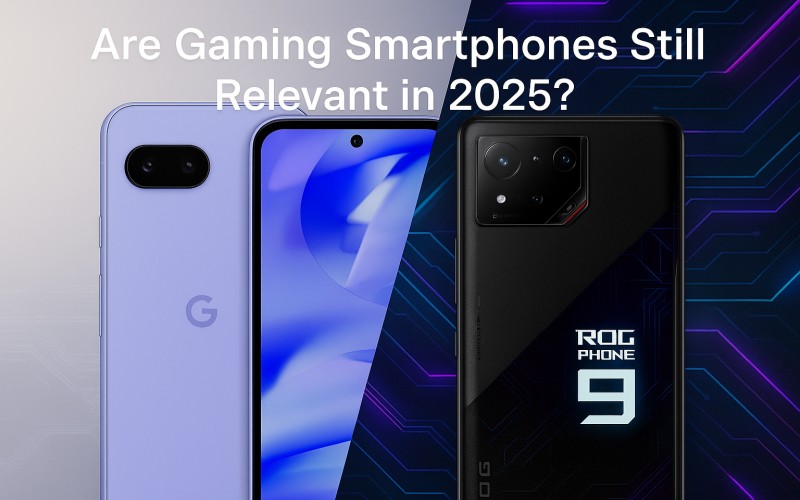Once upon a time, gaming smartphones were the edgy rebels of the tech world—aggressively styled, performance-focused, and unapologetically overkill. Fast forward to 2025, and the question is louder than ever: Do gaming phones still make sense today, or are they just flashy relics in a maturing mobile landscape?
Let’s break it down.
Power Isn’t Exclusive Anymore
Gaming phones built their identity on raw, unfiltered power. But in 2025, that power is no longer exclusive.
Even mid-range devices like the Pixel 8a or OnePlus Neo 5G can handle heavy games like Genshin Impact, Valorant Mobile, and Call of Duty: Warzone at respectable frame rates.
Flagship phones? They’re absolute workhorses. The iPhone 16 Pro and Galaxy S25 Ultra can run the most demanding games at max settings with no effort, thanks to next-gen chipsets, ray tracing support, and AI-powered rendering. The performance gap between gaming phones and standard flagships is now minimal, if not negligible, for most users.
Cooling Systems vs Real-World Use
Phones like the ASUS ROG Phone 9 or Lenovo Legion Duel X boast advanced cooling systems, including built-in fans and vapor chambers. These are excellent for prolonged sessions—but ask yourself: How often are you playing games for three to four hours straight, in high temperatures, on ultra settings?
Unless you’re into professional mobile eSports, most users never even come close to triggering thermal throttling on a flagship device. For casual to moderate gamers, standard phones remain cool enough without extra hardware.
Where Gaming Phones Actually Shine
Gaming smartphones still have an edge in certain areas:
Built-in shoulder triggers enhance FPS games.
Custom game dashboards allow granular control over CPU/GPU usage, frame rates, and notifications.
Enhanced touch sampling rates and low input latency make gameplay smoother.
These features create an experience tailored for gaming enthusiasts. But it’s important to note that many flagship devices now offer similar software features, and hardware add-ons can replicate most of the benefits.
The Trade-Offs: Cameras, Updates, and Versatility
This is where gaming phones start to show limitations.
Cameras are often an afterthought, with average performance in daylight and poor results in low light.
Software updates are slower and shorter in duration than mainstream brands like Apple, Samsung, or Google.
Design language leans heavily toward gaming aesthetics, which may not appeal to everyone or fit all settings.
Battery life tends to be optimized for peak power use, not long-term efficiency.
Flagship phones, by contrast, offer a balanced ecosystem: top-tier cameras, long-term support, polished user experience, and stylish, lightweight designs suitable for both casual and professional environments.
Who Should Consider a Gaming Phone in 2025?
Gaming smartphones are still a solid choice if:
You play high-end games daily for extended hours.
You live-stream gameplay or content regularly.
You enjoy physical controls and customizing performance settings.
You want a phone that’s designed purely for gaming, even if it compromises elsewhere.
But if your phone is also your camera, your daily planner, your productivity tool, and your entertainment hub, a flagship device will serve you better.
Final Verdict: Do Gaming Phones Still Make Sense?
Yes, if gaming is your main priority and you’re a dedicated mobile gamer.
No, if you’re looking for a well-rounded, all-purpose smartphone.
Gaming smartphones in 2025 aren’t irrelevant—they’re simply specialized. They cater to a niche audience with specific needs. Meanwhile, flagship smartphones continue to evolve into reliable all-rounders capable of delivering excellent gaming performance without compromise.
Before you buy, reflect on how you actually use your phone. Chances are, you’ll find that a flagship suits your needs more comprehensively.










